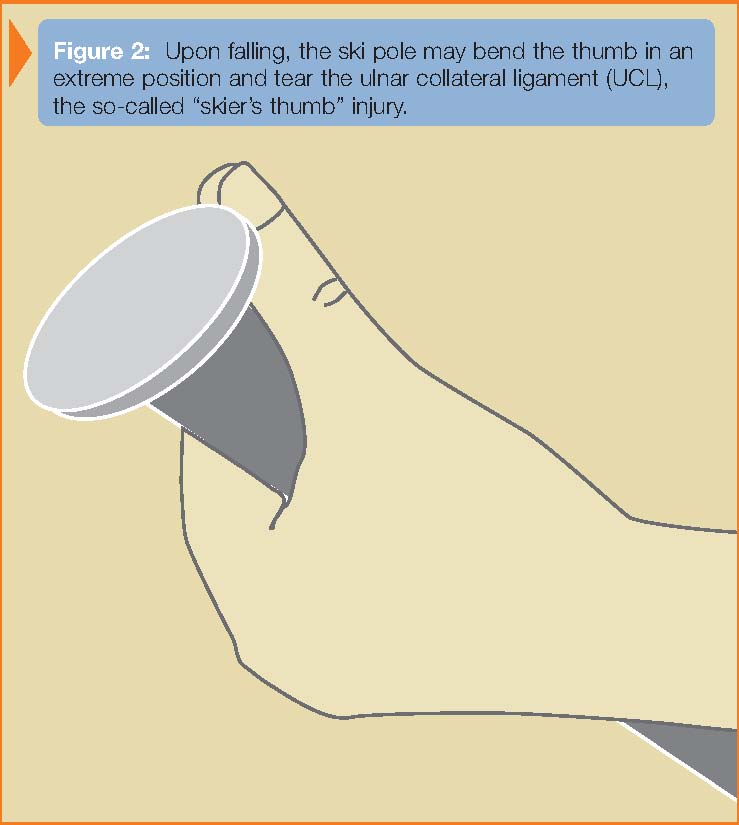What are sprains?
A sprain is an injury to a ligament. Ligaments are the connective tissues that connect bones to bones across a joint.
How do thumb sprains occur?
These types of injuries are common in sports and falls. The thumb is jammed into another player, the ground, or the ball. The thumb may be bent in an extreme position, causing a sprain. The thumb will usually swell and may show bruising. It is usually very painful to move.
What are the most common types of thumb sprains?
The most common ligament to be injured in the thumb is the ulnar collateral ligament (see Figure 1). Injury to this ligament is sometimes called “skier’s thumb” because it is a common skiing injury. It occurs when the skier falls and the pole acts as a fulcrum in the hand to bend the thumb in an extreme position (see Figure 2). This ligament may also be injured by jamming the thumb on the ground when falling or by jamming the thumb on a ball or other player. The radial collateral ligament (see Figure 1) may also be injured. It is much less commonly injured than the ulnar collateral ligament.
How are these injuries treated?
X-rays are usually taken to make sure the bones of the thumb and hand are not fractured. Your doctor will then examine the thumb to determine whether the ligament is torn. If the ligament is partially torn, it is usually treated in a cast or splint. Radial collateral ligament injuries are frequently treated this way as well. The end of a completely torn ulnar collateral ligament often gets trapped behind a tendon. Complete ulnar collateral ligament tears are most commonly treated with surgery to repair the ligament. Sometimes the remaining ligament tissue is of poor quality and the ligament must be reconstructed.
Chronic Injuries:
The term “chronic” refers to an old injury of greater than several weeks duration. In this case, the joint may be unstable with symptoms of pain, especially with pinching. The joint may feel loose and strength may be decreased. These injuries may be treated by reconstruction of the ligament, or joint fusion if arthritis is present.
Associated Injuries:
On occasion, fractures may occur along with thumb sprains. These may require additional surgery with repair using metal pins, screws, or plates. Cartilage damage may occur as well which does not show up on x-ray. This occasionally results in long-term pain and eventual arthritis. Some patients may benefit from cortisone injections or eventual surgery.
American Society for Surgery of the Hand • www.handcare.org


